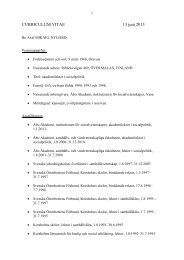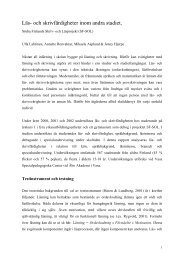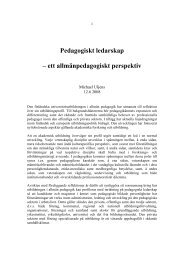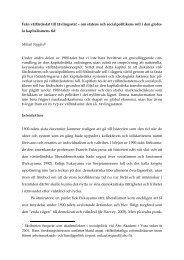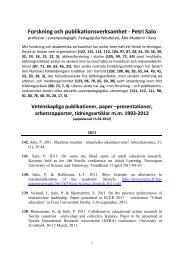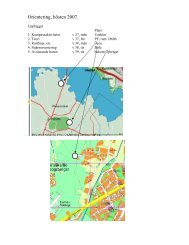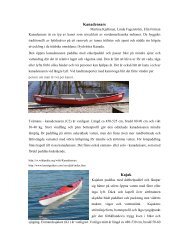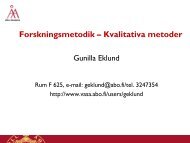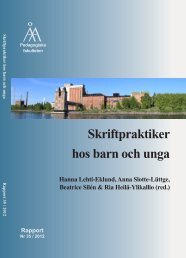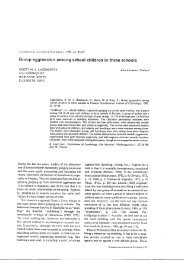Theoretical Considerations on Conflict and Aggression
Theoretical Considerations on Conflict and Aggression
Theoretical Considerations on Conflict and Aggression
Create successful ePaper yourself
Turn your PDF publications into a flip-book with our unique Google optimized e-Paper software.
3. Invevilobilltv of C<strong>on</strong>flict Buf Nol of Vlolence 29Freud originally stated rhat there existed <strong>on</strong>ly <strong>on</strong>e basic drive in humans, thetibido or Eroi, fto* which other morivari<strong>on</strong> is derived (Freud, 1920/1940). Later'after experiencing rhe horrors of\0orld \var I, he canre to che c<strong>on</strong>clusi<strong>on</strong> that therealso must e*ist *iihin man an opposite, desructive drive, which he labeled Thanatosafter rhe Greek god ofdearh (Freud, 1910/1948). The English-language literaturehas labeled this drive the death instinct.Freud was involved in corresp<strong>on</strong>dence with Albert Einstein, in which theydiscussed whether tl-ris proposed destructive drive really existed, <strong>and</strong> ifit did, woutdrhis drive explain *hy humar.r, so easily ger involved in warfare (Einstein& Freud,l933llg7z). Emsrein denied the existence of Thanatos, but Freud held a morepessimistic view According to him, hunrans have indeed an innate drive towarddestructi<strong>on</strong>, <strong>and</strong> therefore, warfare cannot be avoided'A circumstance lirtle known or at least seld<strong>on</strong>r described in the literature is thatFreud was of the opini<strong>on</strong> rhat the death ?ieb, Thanatos, primarily is self-descructive'directed inwards io*ard people themselves, <strong>and</strong> rhat outward aggressi<strong>on</strong> o.ly is achan1rele derivari<strong>on</strong> fr<strong>on</strong>t ic. Eros a1d Thar-ratosymboli;ed to him the <strong>on</strong>goingstruggle berween thc wish for life <strong>and</strong> the wish fbr death, within eacl'r individual'ir1,.hor,.,"lyrt, afrer Freud found rhe idea of an innate self-destructive drivedifficulr to rec<strong>on</strong>cile <strong>and</strong> Hartmann, Kris, <strong>and</strong> Loewenstein (1949) suggested thatthere is, indeed, a drive roward destrucri<strong>on</strong> rvithin humans, but the primarydirecCi<strong>on</strong> of ti.ris drive is outward aggressi<strong>on</strong>, uot inward self-destructi<strong>on</strong>. Thrsviewpoint has been comm<strong>on</strong>ly accepted within psychoanalysis ever since' That is'the noti<strong>on</strong> of ar.r innate aggressive drive stems, in a strict settse, frotn Hartmann,Kris, <strong>and</strong> l-,oewensreiu, l'Iot frotn Freud.Erhologist K<strong>on</strong>rad Lorenz also suggested the existence of an innare' aggressivedrive in hii book On Aggressi<strong>on</strong> ( 1966). The exacc ftanslati<strong>on</strong> of the German originalname Das Sogen<strong>on</strong>,l,. Bor. (Lorenz, 1963) woutd be "The So-Catled Evi[," revealingLorenz's viewpoinr that aggressi<strong>on</strong> is not necessarily bad. It is obvious from Lorenz'spresentari<strong>on</strong> ihat he rhoughr this drive to functi<strong>on</strong> in accordance with the pre'viously menri<strong>on</strong>ed reservoir moclel. M<strong>on</strong>ragu (1976, p. 92) describes it as a "hydraulicnrodel." Lorenz (1966) suggested that the best way for hunankind to avoidviolence is ro find vicarious ourlets for this drive, such as the viewing of aggressivesporrs-a kind of catharsis hypothesis (Feschbach, 1955). The serious problenr ofulol"n." ant<strong>on</strong>g soccer fx15-;se6sg1 hooliganism"-is a real-life refutati<strong>on</strong> of thishypothesis, n, *. th" findings ofincreased aggressiveness after violent film viewing(e.g., Gorans<strong>on</strong>, 1970; Huesmann & Er<strong>on</strong>, 1986).Tl.re instincr, or Trieb rheory, should thus be regarded as refuted: The need toaggress is not an innate drive comparable to hunger, thirst' or sex, functi<strong>on</strong>ing inaccordance with the reservoir model. If tltat were the case, every<strong>on</strong>e of us wouldfee[, wirhout exrernal stinruli or frustrati<strong>on</strong>, an ever-incteasing drive to bec<strong>on</strong>leaggressive, perhaps a need to go out <strong>and</strong> hit some<strong>on</strong>e about <strong>on</strong>ce a week, in orderto have the drive fulfilled' This is certainly not the case.There is, however, at least <strong>on</strong>e circuntstance ofbiological nature that may havea str<strong>on</strong>g tenclency to lead nten <strong>and</strong> w<strong>on</strong>ren intO interpers<strong>on</strong>al c<strong>on</strong>flict: the naturalemori<strong>on</strong> of angcr, cxperienced when <strong>on</strong>e is frrrstrated. The abiliry to get angry has



